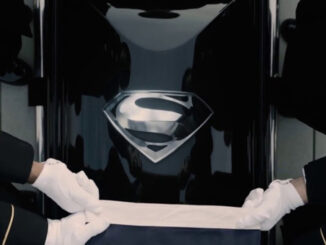Over its almost 90 year history, Metro Goldwyn Mayer, or MGM, has become a legendary name in the world of film. From film series ranging from The Thin Man to Pink Panther to James Bond series, from movie musicals such as Singing in the Rain and The Wizard of Oz to Best Picture Oscar winners such as Ben-Hur and Mrs. Miniver, MGM became known for classic cinematic fare.
Unfortunately, over the last several decades, MGM has become even more well known for its financial troubles. Year after year where box office bombs (Heaven’s Gate, anyone? How about Cutthroat Island?) outweighed box office successes and poor management decisions increased the studio’s debt. The once strong MGM entered a fight for its survival.
The years of financial struggle came to a head in 2009, as MGM CEO Stephen Cooper attempted to sell the studio to try and fend of bankruptcy. Even though MGM’s future looked bright–it still had rights to the newly rejuvenated Bond franchise, it had much talked about remakes of RoboCop and Carrie in the pipeline, and it owned a stake in the eagerly anticipated The Hobbit–and had a number of potential buyers, no deal could be reached for the sale. MGM’s bankruptcy plan was approved on December 2, 2010.
As MGM entered bankruptcy, much of its operations came to a halt. Two films that were completed and set to be released–The Cabin in the Woods and Red Dawn–were put on hold, and development on the next Bond film and The Hobbit was delayed.
Typically, this kind of hiatus could be fatal for a film. Movies put on the shelf often stay on the shelf, and if projects are delayed, you typically lose cast and crew who can’t afford to wait for the project to restart. However, in this case, time spent in limbo did a whole lot more good than bad.
The Cabin in the Woods and Red Dawn were both scheduled to be released in 2010, but MGM’s financial troubles did away with that idea. By 2011, MGM was looking to sell distribution rights for the films. Cabin ended up at Lionsgate, a perfect fit for the horror homage/satire as the distributor is known for the horror films like Saw that Cabin was parodying. Red Dawn ended up at the relatively new FilmDistrict.
Both films had, at the time, young, unknown casts. This is where the delay helped because in between the time they were filmed and the time they were release, some of the up and coming cast came up, so to speak.
 Chris Hemsworth, who has a role in both The Cabin in the Woods and Red Dawn, was a relatively unknown Australian soap opera actor when he shot those films. His biggest American film role was a cameo in the Star Trek revamp as Captain Kirk’s father. But in 2011, he starred in Thor, one of Marvel’s “Phase One” superhero films. Thor tripled its production budget in grosses worldwide and established Hemsworth as a burgeoning superstar in the making and a hunky heartthrob for the ladies.
Chris Hemsworth, who has a role in both The Cabin in the Woods and Red Dawn, was a relatively unknown Australian soap opera actor when he shot those films. His biggest American film role was a cameo in the Star Trek revamp as Captain Kirk’s father. But in 2011, he starred in Thor, one of Marvel’s “Phase One” superhero films. Thor tripled its production budget in grosses worldwide and established Hemsworth as a burgeoning superstar in the making and a hunky heartthrob for the ladies.
Red Dawn one ups The Cabin in the Woods when it comes to the little known actor to superstar quotient as it also has Josh Hutcherson in its cast. Unlike Hemsworth, Hutcherson got his start in Hollywood as a child actor and has an extensive resume to his name prior to shooting the Red Dawn, including the successful Journey to the Center of the Earth remake. But his casting as Peeta Mellark in the highly anticipated The Hunger Games adaptation shot him into super stardom as well. Unless something highly unlikely happens, when Red Dawn opens on November 21, it will feature stars from the highest grossing (Hemsworth and The Avengers) and third-highest grosssing (Hutcherson and The Hunger Games) films of 2012 in its cast. If even part of the audiences for those films carry over to Red Dawn, it should be a hit.
 Another way the release delay should help Red Dawn‘s grosses is that it allowed the filmmakers to change the villain of the film from China to North Korea. In the time between when the movie was filmed and when it will be release, foreign markets, especially China, have become vital for a film’s financial success. Red Dawn should do much better in China now that their country isn’t the one viciously invading ours.
Another way the release delay should help Red Dawn‘s grosses is that it allowed the filmmakers to change the villain of the film from China to North Korea. In the time between when the movie was filmed and when it will be release, foreign markets, especially China, have become vital for a film’s financial success. Red Dawn should do much better in China now that their country isn’t the one viciously invading ours.
MGM made sure to keep hold of their interests in the Bond franchise and The Hobbit as they progressed through bankruptcy. Both projects were affected by the delay, but they too came out of the ordeal better than they went into it.
 Development had started on Bond 23, which we now know is called Skyfall, before MGM entered bankruptcy. Sam Mendes was picked as director and Peter Morgan was chosen to write the script. However, when the project became delayed, Morgan had to leave the project before finalizing the final script. Rumor has it that Mendes worked on the script to the film during the time production was unable to go forward, calling on writers such as Neal Purvis, Robert Wade, and John Logan to build up the characterization in the script.
Development had started on Bond 23, which we now know is called Skyfall, before MGM entered bankruptcy. Sam Mendes was picked as director and Peter Morgan was chosen to write the script. However, when the project became delayed, Morgan had to leave the project before finalizing the final script. Rumor has it that Mendes worked on the script to the film during the time production was unable to go forward, calling on writers such as Neal Purvis, Robert Wade, and John Logan to build up the characterization in the script.
Another benefit of the delay is that the film will be released in November 9, 2012, 50 years, one month and four days after the Bond franchise began with Dr. No. The anniversary was covered in all forms of media, and Skyfall was mentioned prominently in every article and news feature about the golden jubilee. If the film was released years earlier, it would not have received the boon of so much free publicity. (The Cabin in the Woods also benefited with a load of free publicity due to its being released the month before The Avengers. In the promotional blitzkrieg for that movie, of course starring Hemsworth and written and directed by Cabin‘s co-writer and producer Joss Whedon, interviews would often refer to the earlier film, raising awareness of the film among a possible target audience).

While Skyfall lost a screenwriter, The Hobbit lost a director in the delay. Guillermo del Toro was originally slated to direct the Lord of the Rings prequel, but had to drop out when MGM’s financial quandary prevented the film from being green lit before the window del Toro allowed in his schedule for the film elapsed. The director’s departure left MGM and co-producers Warner Brothers searching for a new director. Eventually, the powers that be picked the executive producer of the film to take over as director.
Normally, when a producer replaces a talented and experienced director such as del Toro, the film is doomed with no hope for improvement. However, this time around, with no offense meant towards the skill and ability of del Toro, the producer will be an obvious improvement. Why? Because that producer is Peter Jackson, the man who brought Tolkien to the screen with The Lord of the Rings trilogy, winning three Academy Awards for its final installment, Return of the King.
With Jackson at the helm, The Hobbit trilogy will have a sense of continuity with the world Jackson built with Lord of the Rings. Again, no slight meant to del Toro, a director I admire and respect, something would simply be missing without Jackson in the director’s chair.
We are witness to the impossible happening–four films whose quality and/or box office potential were magnified by a studio’s bankruptcy. Too bad what happened to MGM was a stroke of luck, or else many other studios would pursue bankruptcy as a sure-fire way to turn their fortunes around.





Why The MGM Bankruptcy Was The Best Thing That Could Have Happened http://t.co/qnXhUFGj